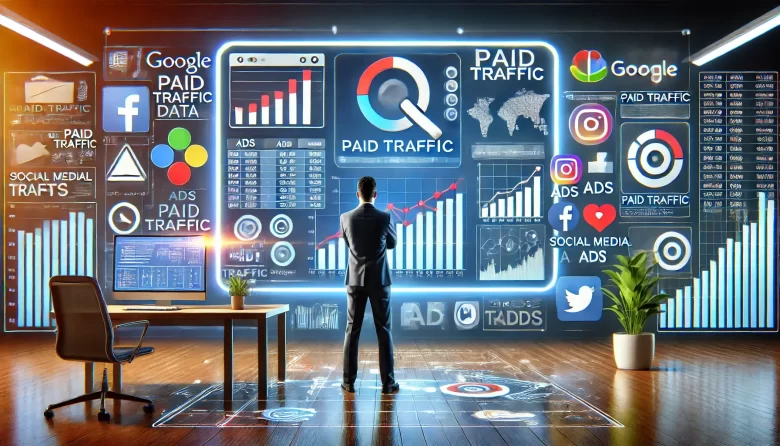Have you ever thought about how paid traffic has changed in recent years? The way businesses connect with their customers evolves daily, and the future promises even more innovations. In this article, we’ll explore the most important trends shaping the world of paid traffic.
What is Paid Traffic?
Before diving into the trends, let’s clarify: paid traffic refers to the practice of displaying ads on online platforms such as Google, Facebook, Instagram, and others, where businesses pay per click or view. This strategy allows companies to quickly and effectively reach a targeted audience.
Trends in Paid Traffic for the Future
1. Artificial Intelligence and Machine Learning: Superior Personalization
Artificial intelligence (AI) and machine learning are transforming how paid traffic campaigns are created and optimized. These technologies enable:
- More precise targeting: Identifying the ideal audience based on behavioral and demographic data.
- Personalized ad creation: Developing ads tailored to the interests and needs of each user.
- Automatic optimization: Adjusting bids and ads in real time to maximize results.
2. Video: The King of Content
Videos are increasingly popular on social media and video platforms, and this trend is also reflected in paid traffic. Videos are a great way to:
- Capture audience attention: Videos are more engaging than static images.
- Tell stories: Convey your brand’s message in a more emotional and memorable way.
- Demonstrate products and services: Show how your products work in practice.
3. Augmented Reality and Virtual Reality: A New Dimension for Paid Traffic
Augmented reality (AR) and virtual reality (VR) are opening up new possibilities for paid traffic. Imagine allowing users to visualize your products in a virtual environment or try out how a product fits in their space. This immersion can significantly increase conversion rates.
4. Native Advertising: Ads that Blend with Content
Native advertising involves creating ads that naturally integrate with the content of a website or app. This approach is less intrusive and more effective since users are more likely to click on ads that appear relevant to the content they are consuming.
5. Chatbots and Virtual Assistants: Personalized Interaction
Chatbots and virtual assistants are becoming increasingly sophisticated, capable of meeting customer needs in a personalized manner. They can be used to:
- Answer FAQs: Freeing up customer service teams for more complex tasks.
- Offer personalized support: Recommending products and services based on customer preferences.
- Generate leads: Collecting contact information from interested users.
6. Data Privacy: A Growing Concern
With increasing concerns about data privacy, businesses must find new ways to collect and use user information. Transparency and consent will become even more important to building consumer trust.
7. Real-Time Personalized Messaging
Real-time personalized messaging enables businesses to connect with users at the exact moment they are most likely to make a purchase. This approach increases ad relevance and improves the customer experience.
Conclusion
The future of paid traffic is promising and full of new possibilities. Companies that adapt to these trends and invest in innovative technologies will be better positioned to achieve success in the digital marketplace.
Remember: paid traffic is a powerful tool, but it must be used strategically to deliver significant results.
FAQ (Frequently Asked Questions)
1. What is the difference between paid traffic and organic traffic?
Paid traffic is generated through ads, while organic traffic is earned through search engine optimization (SEO).
2. What is the best platform for investing in paid traffic?
The best platform depends on your target audience and marketing objectives. Google Ads, Facebook Ads, and Instagram Ads are some of the most popular options.
3. How much should I invest in paid traffic?
The investment in paid traffic varies depending on your company’s size and goals. It’s important to set a realistic budget and closely monitor results.
4. How do I measure the ROI of a paid traffic campaign?
ROI (Return on Investment) can be calculated by dividing the profit generated by the campaign by the amount invested.
5. What are the main metrics to track in a paid traffic campaign?
Key metrics include click-through rate (CTR), cost per click (CPC), conversions, and return on investment (ROI).
6. How do I create effective ads?
To create effective ads, you need to have a well-defined target audience, a clear message, and a persuasive call to action.
7. What is remarketing?
Remarketing is a strategy that allows you to display ads to people who have already visited your website, increasing conversion chances.




